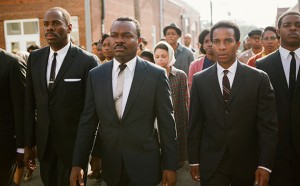 By Lee A. Daniels, NNPA Columnist
By Lee A. Daniels, NNPA Columnist
I wasn’t surprised that Ava DuVernay’s “Selma” was nearly completely snubbed for the Oscar nominations last week, as were several “White” films and White actors and directors. I never thought that, after last year’s breakthrough for “12 Years a Slave,” the Oscar voting academy was going to make another powerful drama that put Black Americans at the center of American history the focus of this year’s Oscar ceremonies.
Yes, some of the Oscar voters may have used the controversy over DuVernay’s portrait of President Lyndon B. Johnson as fig-leaf protection to vote against it. That’s more despicable than the snub itself in my book. Although DuVernay’s depiction of Johnson is wrong, I never expect any film about a historical moment or person to be completely accurate – precisely because every film, no matter how deeply fact-based, is a fictional interpretation of the real story.
“Selma” still stands out as superior story-telling. It poignantly recounts one of the great moments – a triumph, laced through and through with tragedy – of 20th century American history. The film especially recalled for me one of the questions I obsessed over growing up in Boston in the 1960s. That was: who were the folks at the back of the line?
I was fortunate in growing up in Boston, where the Black and the liberal White communities had very active ties to the Southern Movement. In the early 1960s, my brother and I joined an Episcopal church-based “freedom choir.” Later, we attended the Baptist church where Martin Luther King, Jr. had been a co-junior pastor while at theology school at Boston University.
I was “wired” into the movement in a way few Northern teenagers were. But I didn’t kid myself. I knew I was many steps removed from the danger faced daily by the real civil rights activists and the Black Southern teens who involved themselves in the movement there. That was why, as much as I was inspired by the movement’s local and national leaders, whose names appeared in the news dispatches from the civil rights’ fronts, I always wondered about those who were there but out of the media spotlight.
Nothing dramatized my obsession with that question more than the movement’s stand at the Edmund Pettus Bridge. In the film, and in the real-life television films of that moment, we see the marchers as they stand, facing the storm troopers of the state. We know they know they were facing men who had no compunction about killing Black people and their White allies, be they men, women or children.
When I saw the television news reports of “Bloody Sunday,” that long-ago night in March, 1965, it made everything plain: Not just the movement’s commitment to nonviolence even in the face of imminent danger. It also made plain what those in “the line” at Selma and elsewhere on the civil rights trail had done and were doing. They were protecting me – transforming the blows meant for me into a force that would expand the boundaries of opportunity for me all my life.
Thankfully, I was also able to realize it wasn’t only all about me. I understood the movement’s other meanings, too: That intellectual keenness and “smarts” weren’t limited to the formally educated and the socially prominent. That rough-hewn speech could be just as powerful, if not more so, than polished oratory. That the ability to inspire and lead people existed in and was exercised by all sorts of people, and that participation in communal affairs and collaboration with others was vitally important if the community and individuals within it were to advance.
I’m glad for the controversy about Ana DuVernay’s “Selma.” For it may provide another reason for some viewers of all ages to read some of the considerable number of significant nonfiction books that provide a more complete factual account of the movement in Selma and across the South and North, and of America in the 1950s and 1960s.
That will not only give them a fuller understanding of the racist fury the freedom struggle in the South faced; it will also make even clearer the values that fortified the civil rights activists in the struggle, and why those values proved more powerful than the willingness of the region’s racist power structure and its henchmen to do evil.
Embedded in that understanding is another powerful lesson that’s always worth re-affirming. It’s not only the leaders; it’s those at the back of the line, too, who make movements for social justice work.
Lee A. Daniels is a longtime journalist based in New York City. His essay, “Martin Luther King, Jr.: The Great Provocateur,” appears in Africa’s Peacemakers: Nobel Peace Laureates of African Descent (2014), published by Zed Books. His new collection of columns, Race Forward: Facing America’s Racial Divide in 2014, is available at www.amazon.com.








